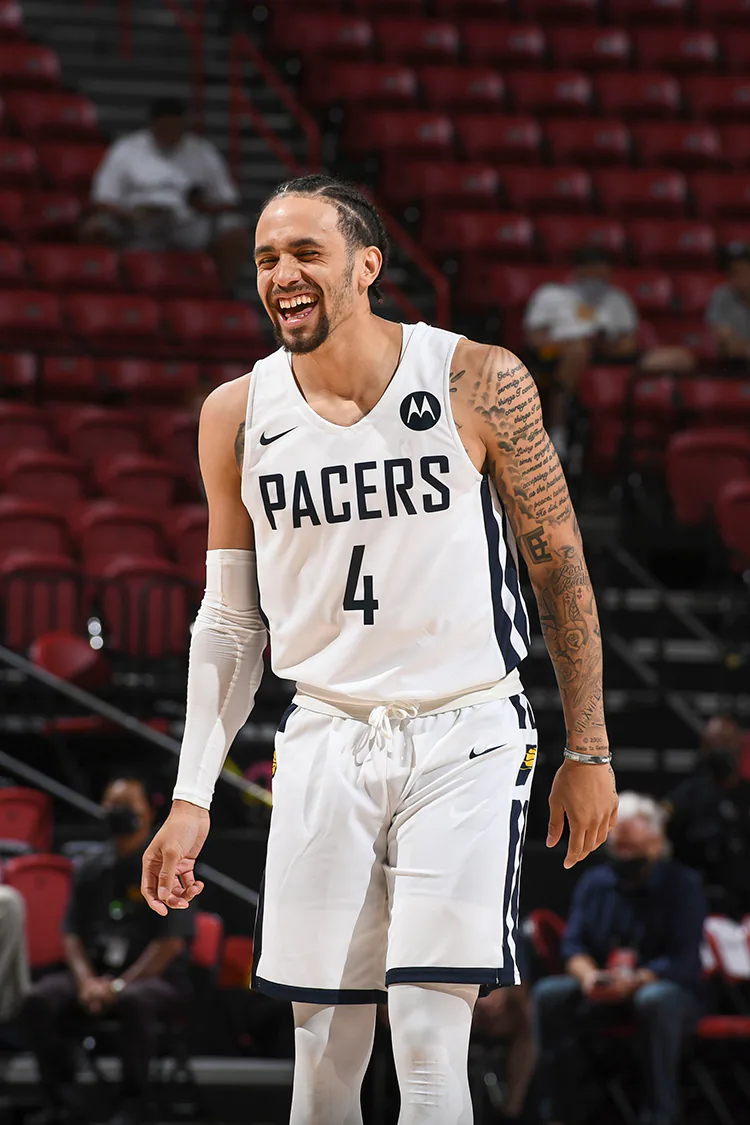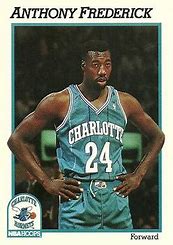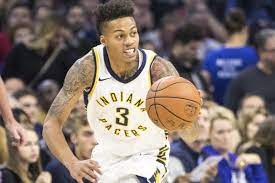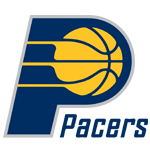
Posted Aug. 10, 2021
Duane Washington Jr. had a sensational debut in summer league play for the Pacers on Monday, scoring 23 points while hitting all five three-point attempts in their loss to New York in Las Vegas.
That was an encouraging moment for the undrafted player out of Ohio State, but analyzing its long-term ramifications is as precarious as it is premature. Historically, with all NBA teams, taking deeper meaning from individual performances in both single games and throughout league play is … well, let’s say risky.
Players certainly have been able to advance their careers in these off-season gatherings, which are certainly superior alternatives to playing in unorganized pickup games. They often are poor indicators of a player’s NBA future, however, bringing both false hope and unwarranted worry.
All in all, summer league games are often a bizarro world where winning is secondary and relative unknowns and long-forgottens burst onto the scene and excite fans with their potential - and then fade quickly when the real games begin. Players such as Al Leslie, Billy Williams, Steve Woodside, Jose Slaughter, Anthony Frederick and Nate Johnston have been summertime standouts for the Pacers. But Jalen Rose, a former first-round draft pick with three seasons of NBA experience, once struggled, and future stars such as Clark Kellogg, Wayman Tisdale, Chuck Person, Reggie Miller, Rik Smits, Danny Granger and Roy Hibbert didn’t even participate ahead of their rookie season.
It’s a mixed bag, as Donnie Walsh will tell you. Walsh, the Pacers’ former general manager and team president, considers summer league play “not that important, other than to look at guys,” but also “valuable because you get extra practice.”
Walsh should know, having witnessed nearly 30 off-season Pacers teams compete in summer leagues all over the country as well as a few more while directing New York’s basketball operations. He’s just about seen everything that can happen in the off-season, from future stars casting doubts to unknowns earning a contract to lottery picks getting injured.
Today, the NBA’s summer league as it exists in Las Vegas is a multi-million-dollar enterprise that serves as an unofficial league convention. Representatives from all 30 teams swoop in on chartered flights and stay in five-star hotels on the Strip. Some years, teams from other countries participate as well. Some veteran players attend to get a glimpse of their new teammates, as Myles Turner is doing now, and hundreds of media members come to report on the most-hyped draft picks. Scouts from all over the planet infiltrate as well, hoping to pluck clients from the group of players who don’t make NBA rosters.
Franchises pay a registration fee just to compete in the league - $15,000 in previous years - and one survey estimated they spend about $6,500 per player for travel, meals, housing and uniforms just to field a squad. They also pay the expenses of coaches and front office members who attend the games.
All the expense seems justified given the degree of fan interest. Sellout crowds of more than 17,000 sometimes fill the Thomas and Mack Center in Vegas to watch the 40-minute games. If recent trends continue, more than 140,000 people will pay to watch the 11-day league schedule that concludes with a tournament and crowns a champion.
Humble beginnings
It hasn’t always been this way, of course.
The evolution of the NBA’s off-season competition can be traced via the Pacers, who have gone from shipping one seldom-used player to participate in a loosely organized league in Los Angeles in 1979 to today’s all-in status.
Throughout their ABA history, from 1967-76, Pacers players – like most of those throughout the ABA and NBA at the time - did nothing related to basketball in the summer beyond seeking out an occasional pickup game. Around the mid-Seventies, though, random leagues, sometimes organized by agents, began forming and NBA teams began conducting rookie/free agent camps to work with and evaluate talent.
The Pacers had nothing going in the summer of 1976 because they were in the process of being absorbed into the NBA. They invited 22 players to a summer camp at Rose-Hulman the following year. They had another camp in 1978, but first-round draft pick Rick Robey did not participate because he had not signed his contract.
The first mention of summer league competition in an Indianapolis newspaper occurred in 1979, when it was reported Brad Davis had been sent to Los Angeles. Davis had been signed in February of the previous season after being waived by the Lakers and played in 22 games for the Pacers. The summer experience might have helped him, but it didn’t bring a return on the investment for the Pacers. They released him after he had played in five games the following season. He later caught on with the expansion Dallas Mavericks, though, and wound up playing in 14 NBA seasons.

Things picked up the following summer, in 1980, when the Pacers sent a team that included three draft picks and two free agents to the California Summer Professional League, conducted in Dominguez Hills, Calif. at a California State University extension.
The team was coached by Walt Hazzard, a former NBA player who at the time was coaching at Compton Community College. Jerry Sichting, a Martinsville native and Purdue graduate who was trying to catch on as a free agent, recalls meeting Hazzard in the hotel lobby before play began and showing him the plays Pacers coach Jack McKinney had diagrammed for the team to run.
The roster will filled out with “five guys off the street,” according to Sichting, local players with big dreams but no significant basketball background.
“I can’t remember any of those guys or where they found them,” Sichting said. “They kind of came and went.”
That was OK, because the same could be said for some of the other teams. The Pacers’ entry won half of their 10 games, sometimes playing against random collections of free agents, such as one sponsored by the Converse shoe company.
The Pacers returned in 1981, this time with assistant coach George Irvine in command and first-round draft pick Herb Williams in uniform. Williams, selected 14th overall, was suffering from a sore back but played reasonably well. The team’s leading scorer was Billy Williams, a free agent out of Clemson, who didn’t go on to play in the NBA. Bob Fronk, who had just completed his career at the University of Washington, came off the bench to score 26 points in the team’s final game. He never played in the league, either.
The Pacers had a much more formidable squad the following year, 1982, when veterans Williams, Sichting, Butch Carter and George Johnson competed. The highlight of their California trip was a mid-August exhibition game against a team gathered by future hall of fame center Bill Walton, who was recovering from a foot injury. Walton - joined by the likes of Kiki Vandeweghe, Quintin Dailey and Kurt Rambis - scored 27 points, grabbed 12 rebounds, passed out nine assists and blocked four shots to lead a 136-125 victory.
“It was a zoo,” Sichting says. “There were people lined up outside the gym. They turned away people for that game.”
The Pacers were led by their second-round draft pick, Jose Slaughter, with 24 points, six rebounds and six assists. Their first-round pick, Clark Kellogg, didn’t play because he had not yet been signed.
A pattern had been established.
As the years passed it became the norm for unknowns to step to the forefront in summer league play while recent first-round draft picks faltered. Or didn’t play at all. Before scaled contracts for rookies were introduced in the NBA, high draft picks rarely had agreed to contract terms by the time summer league play began. From Robey (1978) to Kellogg (’82) to Wayman Tisdale (’85), Person (’86), Miller (‘87) and Smits (‘88), the team’s most highly anticipated newly drafted player usually did not participate.
There was a practical reason for that, as Dale Davis proved in 1992. He made a good-faith effort to compete in the practices leading up to summer league play despite not having signed a contract, but severely separated his chronically injured left shoulder during a scrimmage and required surgery. It didn’t prevent the Pacers from signing him to a contract, although an agreement was not reached until November.
That was a minor issue compared to what Walsh experienced as president of the Knicks in 2008. Walsh had taken Gallinari with the eighth overall pick in that year’s draft, only to see him suffer a serious back injury in a summer league game after colliding with Robert Traylor. Gallinari played in just 28 games as a rookie for the Knicks in a season ultimately cut short by back surgery.
“And then I looked up after the game and saw every European scout in the world,” Walsh recalled. “I figured I was running tryouts for second-round picks and free agents.”
What's the meaning of success?
More often than not in the Eighties and into the Nineties, first-round draft picks competed in summer leagues after their rookie season because they had not yet signed a contract when summer league play began the previous season. The rookie salary scale solved that issue.
Miller didn't play after he was drafted in 1987 but dominated play in southern California the following year, scoring 39 points in one game.

It would be appropriate if Miller, easily the Pacers’ all-time leading scorer , owned the franchise’s summer league scoring record. But he doesn’t. That for-what-it’s-worth honor goes to forward Anthony Frederick, who had scored 40 in a summer league game in Cleveland the previous month. That exemplifies as well as anything the random nature of summer games, in which star turns are taken by players who never latch on to an NBA roster or merely survive for a season or two at the end of some team’s bench.
“You’re always going to see some guys who are good street players (succeed),” Sichting said. “But that’s not going to be who they are when they get with the veterans. It’s kind of a wide-open league (in the summer). You see the same thing in the NBA, when the game is a blowout and they get in and put their head down and drive every time. That doesn’t mean they’re going to play.”
Frederick, who had been a sixth-round pick of Denver in 1986, averaged 26.4 points on 61 percent shooting over 13 games with Pacer teams that summer. Walsh rewarded him with a guaranteed contract for the following season. He went on to average 3.3 points over 46 games for a team that won 28 games but was not brought back. He played in Spain the following year, then had stints with Sacramento and Charlotte the next two seasons before finishing his career in Europe.
He’ll forever stand as representative of those Pacers who earned an NBA contract with strong summer league play, along with others such as free agents Sichting in 1980 and Marty Byrnes in 1982 and second-round picks Sean Green in 1991 and Jamison Brewer in 2001. But Frederick also is typical of those who managed to draw attention to themselves in the summer but were difficult to find in the winter.
That group includes Indiana basketball icon Damon Bailey, a second-round pick of the Pacers in 1994. He led them with 17 points in a victory over Minnesota in the Upper Midwest Summer League that year and had a double-figure scoring average in league play. But he never played in a regular season NBA game.
Sometimes, summer league games offer an opportunity for resurrection.
Rose volunteered to play in Atlanta in 1997 to achieve a fresh start after a frustrating season on Larry Brown’s bench. Newly-hired coach Larry Bird had taken over and made a point of praising Rose’s potential, and Rose wanted to reciprocate. He also wanted to prove he could play his most desired position, point guard.
It was unusual for a former lottery pick and veteran of three NBA seasons to do so, but Rose participated in the practices leading up to the summer games and traveled with the team to Atlanta. He didn’t endear himself to the coaching staff, however. Wearing his own baggy shorts with a Pacers practice jersey, he had four turnovers in the first half of the first game while running the offense. Moved to small forward in the second half, he scored 14 of his 18 points with just one turnover.
After that game, Walsh walked into the room where Bird was sitting with assistant coach Dick Harter. “We’ve got to get rid of Jalen Rose!” an exasperated Harter declared. Bird laughed, and Walsh bluntly shot down that knee-jerk notion.
Rose at least had made a good-faith gesture that was the first step toward his NBA redemption. He also provided an immediate indication of his best position. Two years later he led the scoring for the Pacers team that reached the NBA Finals and won the league’s Most Improved Player award.
Ron Artest made an even more dramatic summer league appearance in 2005, following the season in which he was suspended for all but the first seven games because of the brawl at the Palace of Auburn Hills. Wanting to become reacquainted with fullcourt games and restore his conditioning, Artest took part in the practices in Indianapolis and then played in all four games in Minneapolis. He led the team with a 19.8-point scoring average without trying to dominate the offense.
By the end of the final game, he was sitting on the bench and leading fans in chants of “Let’s go, Pacers!”
“I thought he kept focused all week,” assistant coach Dan Burke said afterward. “He played hard, and he was rooting for the other guys.”
What appeared to be a strong step toward his redemption didn’t pan out, however. After playing 16 games the following season, Artest asked for a trade, which eventually was granted.
Sometimes, though, a highly-drafted rookie makes an immediate splash that proves to have ripple effects for his career. Lance Stephenson, Bird’s second-round pick in 2010, shot 73 percent from the field and averaged 14.8 points in Orlando in 1983. First-round pick Paul George was the only Pacer to score more, flashing hints of his his all-star future.
Five years later, Myles Turner scored 20 points on 8-of-11 shooting and grabbed eight rebounds in his summer league debut, and then scored 21 points on 9-of-16 shooting a couple of days later. He’s still in the Pacers’ starting lineup.

The leading scorer for the Pacers in that summer league, however, was Joe Young, a second-round pick who scored 25 points in one of the games and 28 in another. Young went on to average just 3.4 points over three seasons with the Pacers and then was released. He went on to become a star in China but has failed to get back into the NBA.
History proves you can never be sure of the meaning of summer league performances. Who knows? Perhaps Monday’s game will turn out to be the first step toward a long NBA career for Duane Washington Jr. Perhaps it will be a false flag. Either way, the process is underway.
“It’s probably not as important as we make it out to be,” Walsh said. “But I’m glad we do it. If you get one guy who clicks in and helps you, it’s worth it. That’s what we’re looking for.”
 Pacers
Pacers